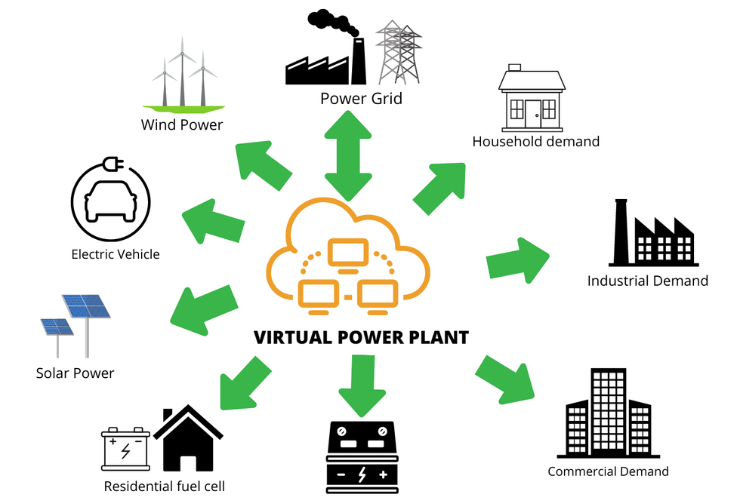Fast read
Yes, commercial battery storage is a highly effective tool for small businesses to significantly reduce expensive demand charges. By storing energy from solar or the grid during off-peak times, a battery can supply power during moments of high usage, a process known as 'peak shaving', which lowers your peak demand figure. Starting 1 July 2025, the Australian Government's Cheaper Batteries Program will offer a substantial rebate to eligible small businesses, making the investment more affordable. This strategy not only cuts operational costs but also provides valuable backup power and increases your energy independence.
Can batteries help reduce demand charges for small businesses?
For many Australian small business owners, navigating a commercial electricity bill can be a confusing and frustrating experience. Alongside the standard charges for the energy you consume (measured in kilowatt-hours), you’ve likely noticed another significant, and often costly, item: the demand charge.
This charge can feel unpredictable and difficult to control, but it represents a major opportunity for savings. By understanding what it is and how modern energy technology works, you can take strategic steps to minimise it. A commercial battery system is one of the most powerful tools available to achieve this, giving you direct control over one of your largest operational expenses.
What exactly are demand charges on my business’s bill?
Think of the electricity grid like a highway. Your regular energy usage charge (kWh) is like a toll for the total distance you travel. A demand charge, however, is like a separate, much higher fee based on the fastest speed you drove at any single point during your journey.
In energy terms, a demand charge is based on the highest level of electrical power (measured in kilowatts, or kW) your business draws from the grid during a short interval—typically 15 or 30 minutes—within a billing period. Network operators levy this charge to cover the cost of building and maintaining a grid capable of meeting everyone’s highest possible “peak” demand, even if that peak only happens for a few minutes a month. For many commercial and industrial customers, this charge can account for a third or more of their total electricity bill.
You’ll find these charges on your bill, often listed as “demand,” “capacity,” or measured in kW or kVA. They are particularly common for small businesses with machinery, multiple large air conditioners, commercial kitchens, or any equipment that draws a lot of power simultaneously.
How a battery system slashes demand charges: The power of ‘peak shaving’
A commercial battery system gives you a powerful way to control your peak demand through a strategy called ‘peak shaving’. It works by intelligently managing the flow of energy to your business premises.
The process is simple but highly effective:
- Monitor: The battery’s smart management system continuously monitors your business’s electricity consumption from the grid in real-time.
- Detect: When it detects a spike in power usage—for example, when you turn on a large piece of machinery or multiple air conditioners start up at once—it springs into action.
- Discharge: Instead of pulling that extra power from the grid and setting a new, expensive peak, the battery instantly discharges its stored energy to meet the demand.
- Shave: The amount of power drawn from the grid remains low and stable, effectively “shaving off” the costly peak. This keeps your recorded maximum demand for the billing period to a minimum.
The battery is then recharged when energy is cheapest—either from your own excess solar generation during the day or from the grid during off-peak hours overnight. This ensures you have a reserve of low-cost energy ready to deploy whenever a new peak begins to form.
Are there government incentives to help with the cost?
Yes, the financial case for a commercial battery is about to become much stronger.
The Australian Government’s Cheaper Batteries Program is set to launch on 1 July 2025, and it is specifically available to households, community organisations, and small businesses. The program will provide a significant upfront discount of around 30% on the cost of installing an eligible battery system. For businesses, the rebate applies to systems with a capacity between 5 kWh and 100 kWh, with the subsidy paid on the first 50 kWh of usable capacity.
A key detail for planning is how this federal incentive interacts with other schemes. The ability to “stack” the federal rebate with a state or territory incentive depends entirely on the rules of the specific state’s program. For example, the Western Australian government has confirmed its state battery rebate will combine with the federal program to increase the total benefit for customers. In other states, like New South Wales, the state hardware rebate is being replaced by the federal one, though an incentive for joining a Virtual Power Plant (VPP) can still be combined with the federal discount.
What are the right features for a commercial battery system?
Choosing a battery for your business isn’t the same as for a home. You need a system built for higher loads, reliability, and smart control. Key features to look for include:
- Scalability and Modularity: Your energy needs may change, so your storage should be able to grow with you. Systems that are modular allow you to add capacity over time. For example, the Sigenergy SigenStor is designed to be easily scalable, with battery units that can be stacked to increase storage capacity, making it suitable for growing businesses.
- High Power Output & Fast Response: To effectively shave peaks, the battery needs to discharge a large amount of power very quickly. This is where a powerful and intelligent inverter is crucial. A robust three-phase hybrid inverter, like those offered by Sungrow, acts as the brain of the operation, seamlessly managing energy from your solar, battery, and the grid to counter demand spikes.
- Reliability and Backup Power: For many businesses, continuity is non-negotiable. A quality battery system can provide backup power to keep essential circuits—like lights, servers, refrigeration, and payment systems—running during a blackout. Systems like the Tesla Powerwall, which can be installed in linked configurations for commercial use, are well-regarded for their reliable backup capabilities.
What else can a battery do for my business?
Beyond demand charge savings, a commercial battery unlocks several other benefits:
- Maximise Solar Self-Consumption: If you have a solar PV system, a battery allows you to store the excess clean energy you generate during the day and use it in the evening or overnight, drastically reducing the amount of electricity you need to buy from the grid.
- Backup Power and Resilience: Protect your business from costly downtime during grid outages. A battery can ensure your critical systems remain operational, safeguarding revenue and customer experience.
- Unlock New Revenue with VPPs: By joining a Virtual Power Plant, you can get paid for allowing the grid operator to use your stored energy to help stabilise the network during times of extreme demand. This turns your battery from just a cost-saving device into a revenue-generating asset.
Questions to ask your accredited installer
Investing in a commercial battery is a significant decision. To ensure you get the right solution, it’s vital to work with a qualified professional. Always insist on a Solar Accreditation Australia (SAA) accredited installer with proven experience in commercial battery systems.
Here are some crucial questions to ask:
- Can you perform a detailed analysis of our electricity bills and interval data to accurately size a battery for our peak demand?
- Which brand of battery and hybrid inverter do you recommend for our specific operational needs, and why?
- Can you provide a clear financial model showing the projected return on investment, including savings from demand charges, reduced energy costs, and potential VPP credits?
- Is the proposed system scalable if our business grows and our energy needs increase?
- What are the warranty details for the battery, the inverter, and the installation workmanship?
By taking control of your energy demand, you’re not just cutting costs—you’re investing in your business’s long-term resilience and sustainability.
If you are exploring how a battery could work for your business, Your Energy Answers offers a free service that connects you with accredited local experts who specialise in commercial solar and storage. This can help you get clear, independent advice tailored to your needs, empowering you to make a confident and informed decision.





